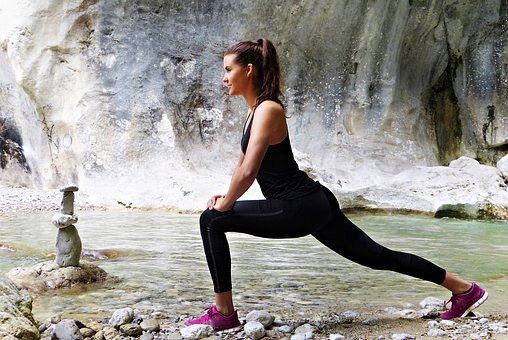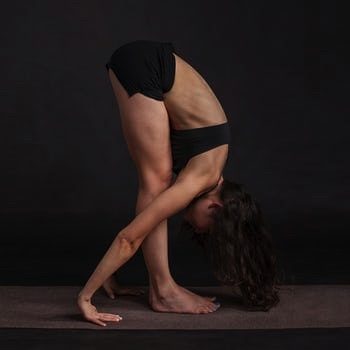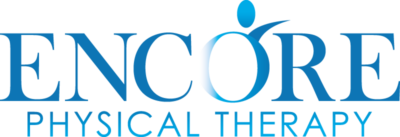Preventative maintenance goes a long way towards keeping your body in prime shape. Everyone knows that exercise should be part of our regular routine, but often that activity is replaced with excuses. Instead of wallowing in your guilt for skipping the gym, commit to these basic exercises to help improve your flexibility, core strength, stability, and balance. Plus, relieve stress and tension throughout the body for better focus, more energy, and improved sleep–all of which contribute to better health. Here are some areas to focus on.

Hip Flexors
Your hips are the central unit of your body. All energy and most movement passes through this area so you rely on it for support of several structures, including the spine and pelvis. Plus, the nerves that provide for the lower extremities run through the area. When you think about it, the hips provide movement and feeling to most areas of the body. Also you have the muscles that connect the hips to the knees. With all of these much-needed structures at risk, it’s ultra-important to stretch out your hip flexors, especially if you sit for several hours each day. For an effective hip flexor stretch, begin with both knees on the ground. Place one foot on the ground in front of you with your knee directly above your foot. Then lean into your front knee, feeling the stretch in the pelvic area of your back leg. You can also perform this stretch from a standing position, which will work the calf muscle as well. Switch feet and stretch both sides through 5-10 repetitions.
Calves
Speaking of calf muscles, many athletes complain of calf pain or cramping. This pain can often originate from other areas of the body such as nerves in the back or muscles attached at the pelvis. But it can also work in reverse with calf issues causing pelvic rotation and/or back pain. It is important to have a trained physical therapist help you evaluate the cause of your tight calves. It’s also important to actively work towards keeping your calves stretched out so they don’t overtighten. There are many effective calf stretches depending on where you are. At your desk you can flex your foot, straightening your leg with your heel pressed into the ground. With a straight core lean into your straightened leg until you feel the stretch. Repeat several times on each side. If you are exercising on the ground, straighten your leg and gently pull your toes back with your hand. Another option is to push both hands into the wall from a standing position. Straighten one leg behind you and press your heel into the ground. Repeat on both sides.
Lower back
 Anyone with lower back issues knows that it can affect nearly every movement you make. Sedentary work habits add to the problem. They also contribute to improper posture and weakened core muscles, which, in turn, add a host of other potential problems. The best way to keep your lower back happy is to concentrate on proper movements while strengthening the muscles in the area and maintaining your range of motion. To stretch out the muscles in this central structure, lay on the ground. Next, with one leg slightly bent, rotate it across the outstretched leg. Keep your shoulder blades on the ground so you only rotate your hips and you should feel the stretch across your glutes and lower back. Another option is to stand or remain on your back, flex your foot and pull your knee into your chest. Hold this stretch for five seconds each time. Repeat five times on each side. For another effective stretch, work from a standing position and roll your upper body forward, allowing your arms to dangle in front of you. Move slowly and maintain a strong core. If you feel ready for the next level cross your arms in front of you for added weight and a deeper stretch.
Anyone with lower back issues knows that it can affect nearly every movement you make. Sedentary work habits add to the problem. They also contribute to improper posture and weakened core muscles, which, in turn, add a host of other potential problems. The best way to keep your lower back happy is to concentrate on proper movements while strengthening the muscles in the area and maintaining your range of motion. To stretch out the muscles in this central structure, lay on the ground. Next, with one leg slightly bent, rotate it across the outstretched leg. Keep your shoulder blades on the ground so you only rotate your hips and you should feel the stretch across your glutes and lower back. Another option is to stand or remain on your back, flex your foot and pull your knee into your chest. Hold this stretch for five seconds each time. Repeat five times on each side. For another effective stretch, work from a standing position and roll your upper body forward, allowing your arms to dangle in front of you. Move slowly and maintain a strong core. If you feel ready for the next level cross your arms in front of you for added weight and a deeper stretch.
Since core strength is pivotal to lower back support, the plank is another great exercise to add to your daily regimen. To plank, begin in a push-up position with your toes curled under and your arms straight with your shoulders over your hands. Begin with 10 seconds. If you are ready to advance, work your way up to two minutes of stationary plank. Make sure you keep your body flat (like a plank) and your core muscles pulled tight. If this position is too challenging, you can adapt it by balancing on your elbows instead of straight arms. Similar to the plank, another exercise that will aid in core stability is to begin on your hands and knees. Slowly straighten one arm along with the opposite leg. Be sure not to tilt your pelvis or sag your lower back. It helps to visualize a bowl of hot soup balanced on your lower back that must be kept level. Repeat several times, switching from side to side.
Neck/Shoulders
Neck issues are nearly as common as back issues. Often the two are related, but both should be evaluated by a professional for the best diagnosis and exercise plan. As a preventative measure or as a treatment for neck pain it is important to keep the neck muscles relaxed and in good working condition. When these muscles are over tightened it can contribute to everything from headaches to pain that radiates down the back or across the shoulders. Exercises that target the release of neck and shoulder muscles begin with simple rotations. First lift each shoulder up towards your ears. Hold for a few seconds and release, pushing the shoulders back and down. Next, move each shoulder in a circular motion, either by leaving the arm near the side or by doing complete arm circles. Similarly, rotate your neck in slow circles, first in one direction and then the other. Next, stretch the neck in each direction, pressing each ear towards your shoulder, the chin towards the chest, and the chin towards the sky. Lastly, reach for the stars. With your arms above your head, interlock your fingers and stretch upwards, lengthening your arms, shoulders, and neck region.
If any of these exercises cause you pain, stop immediately and consult your physical therapist for different options. Inactivity is hard on a body. While you may not have time for daily one-hour yoga class, you can commit to these essential stretches to keep your body flexible and strong.
